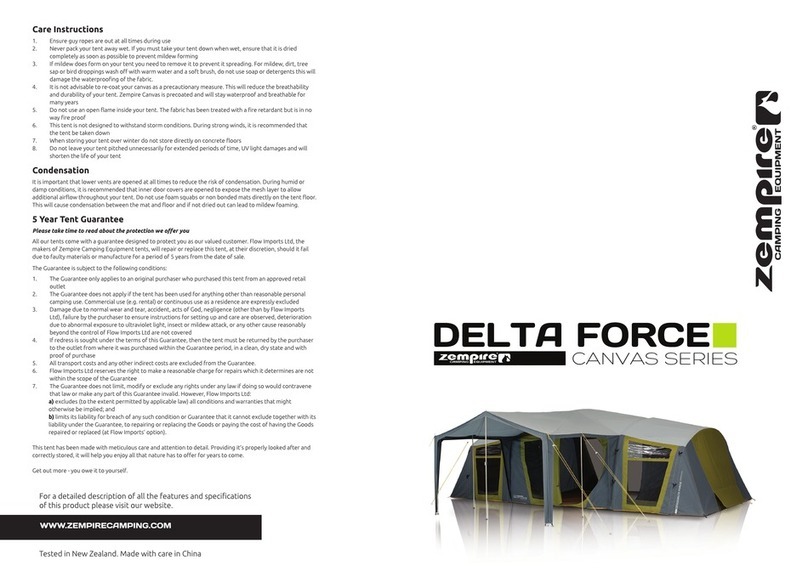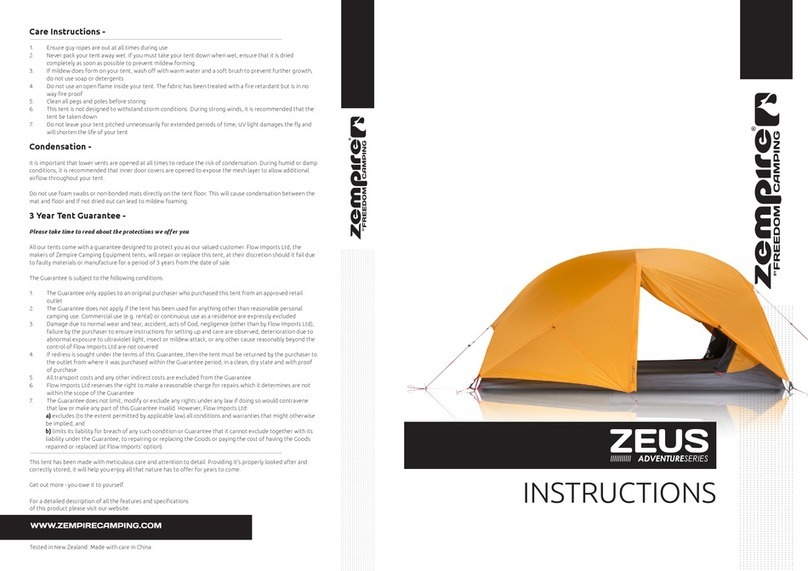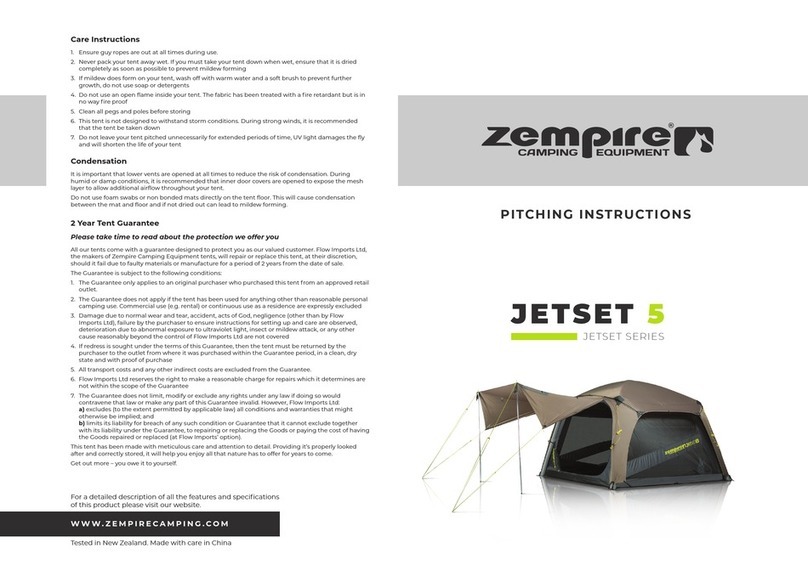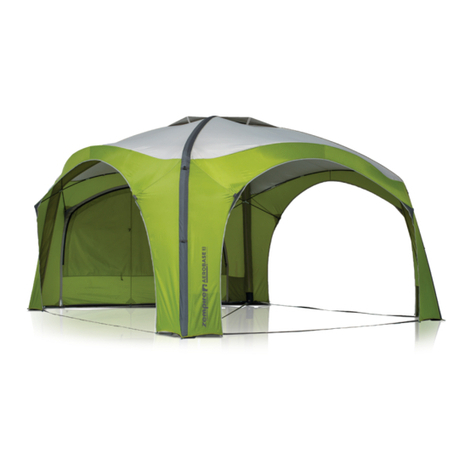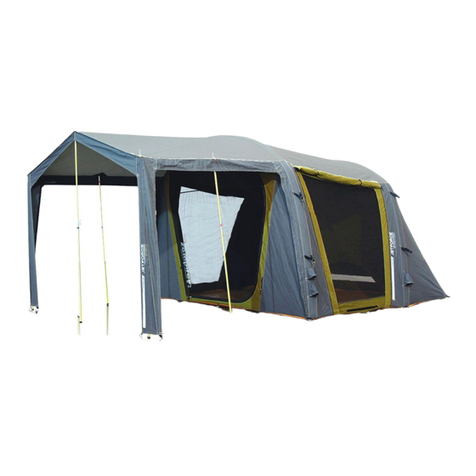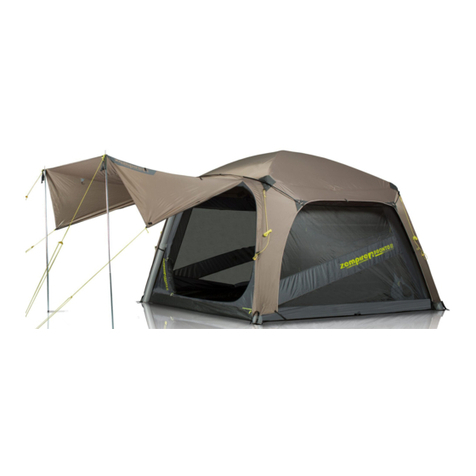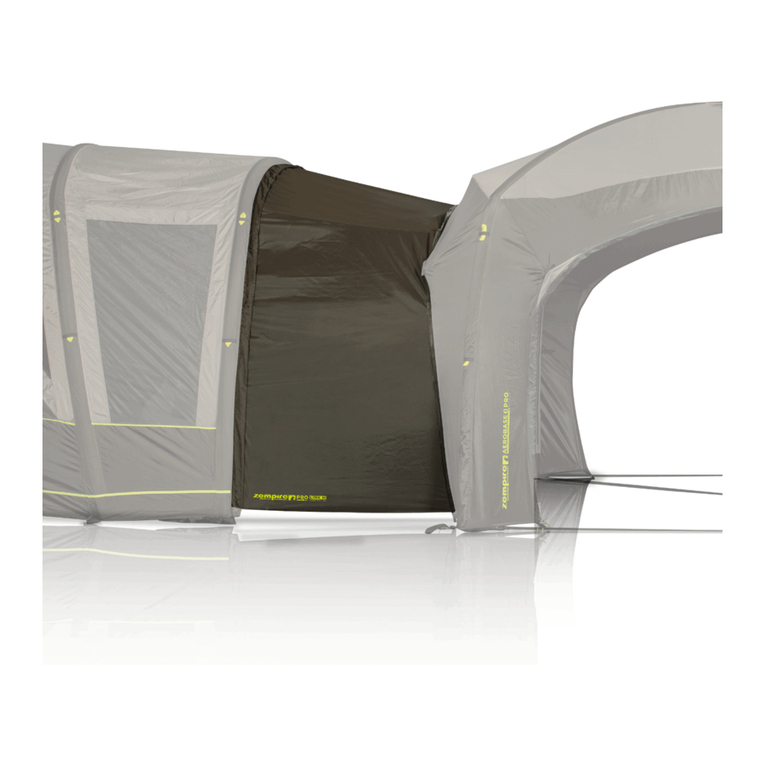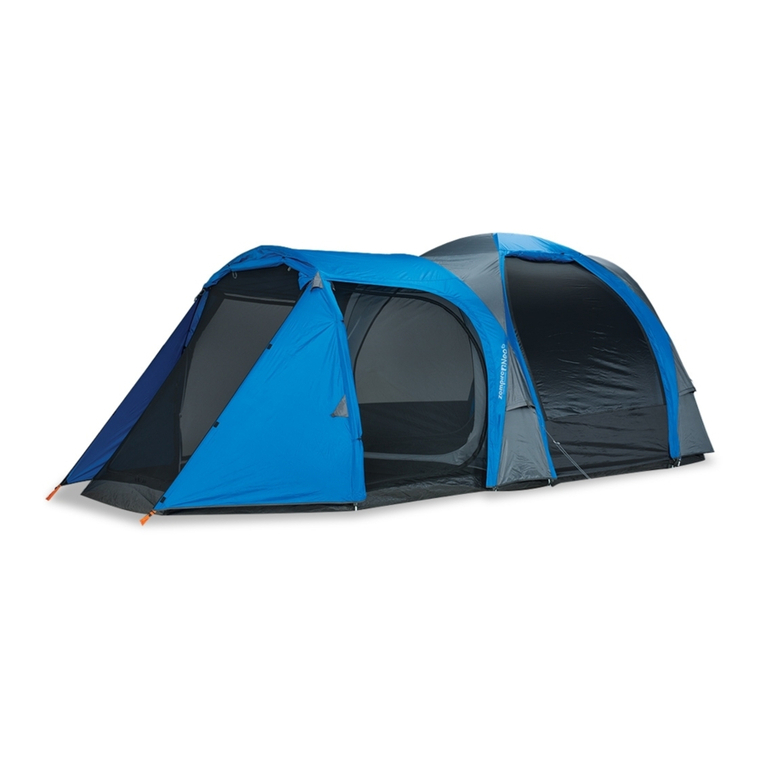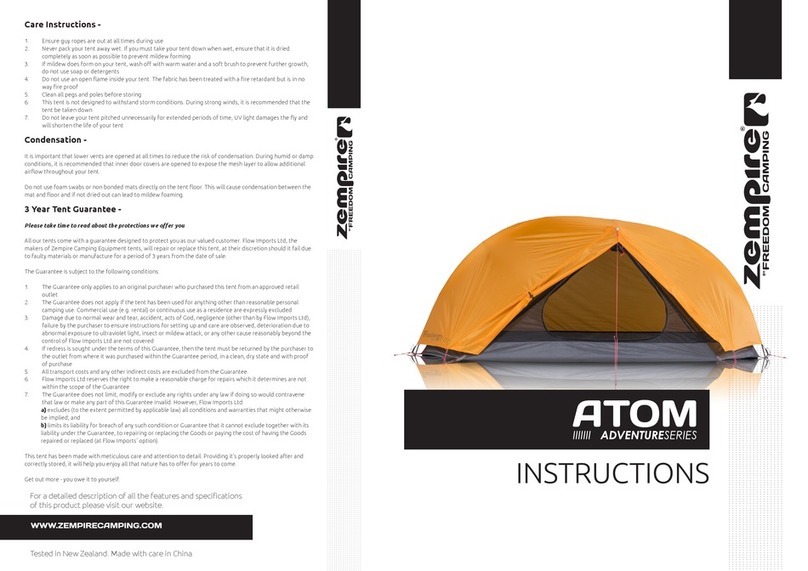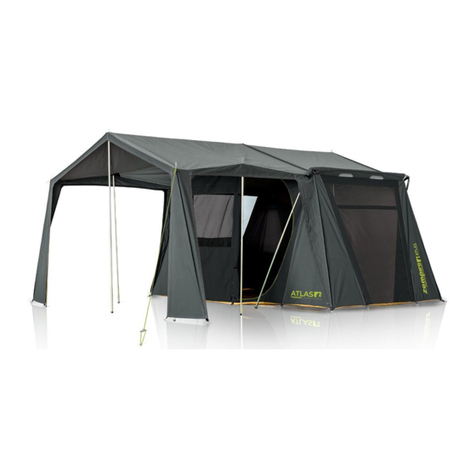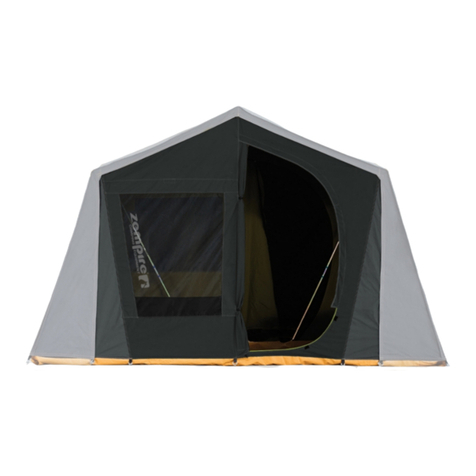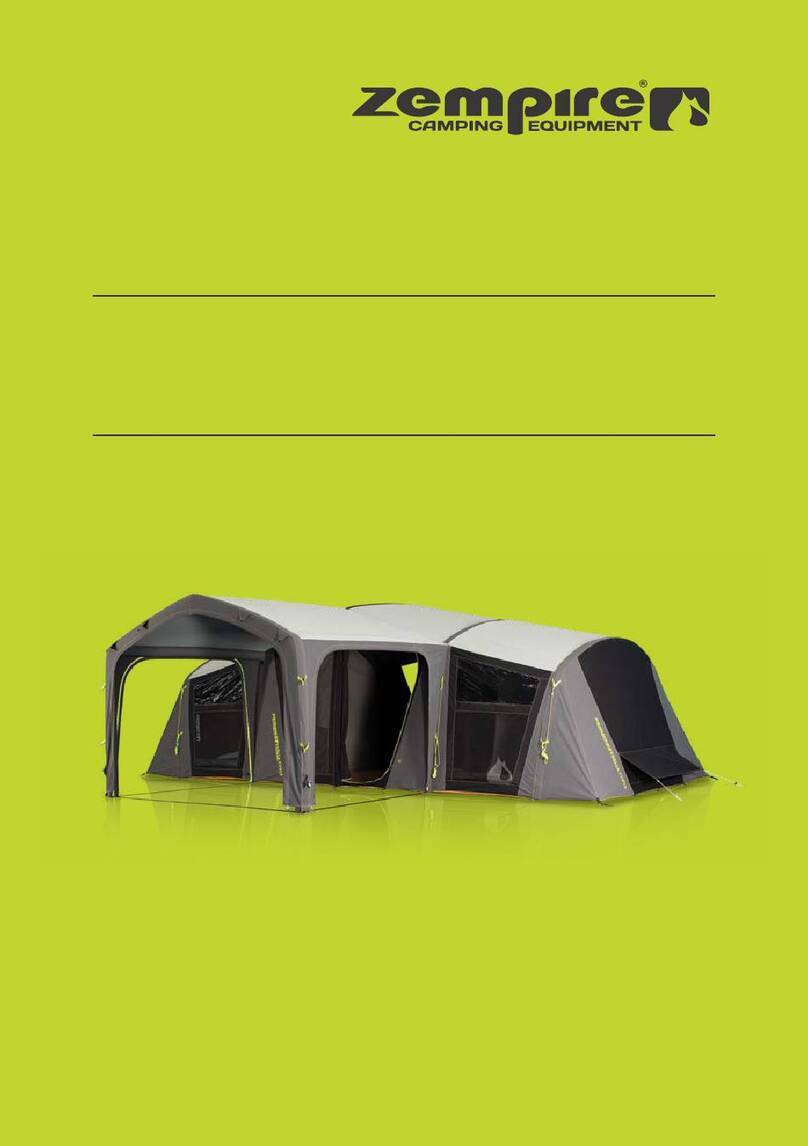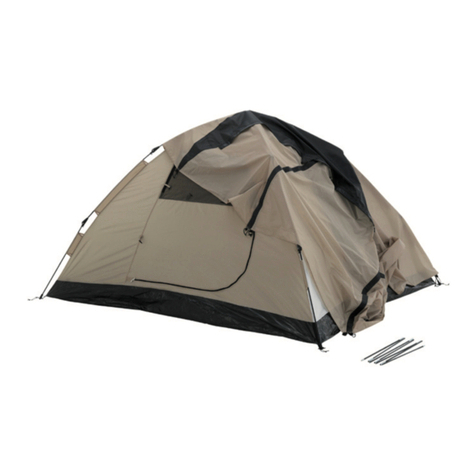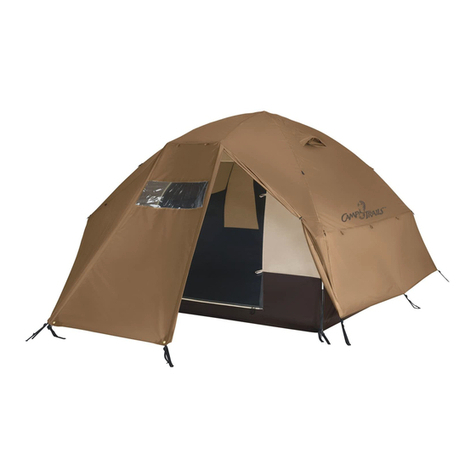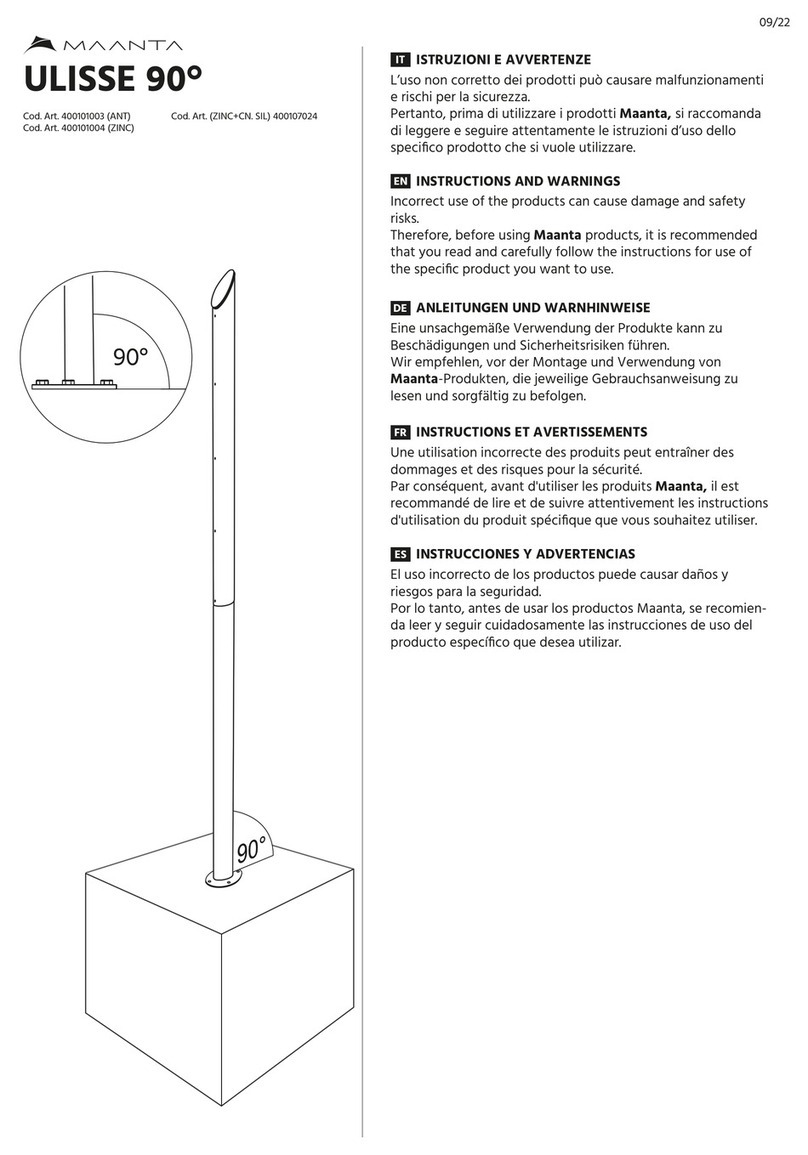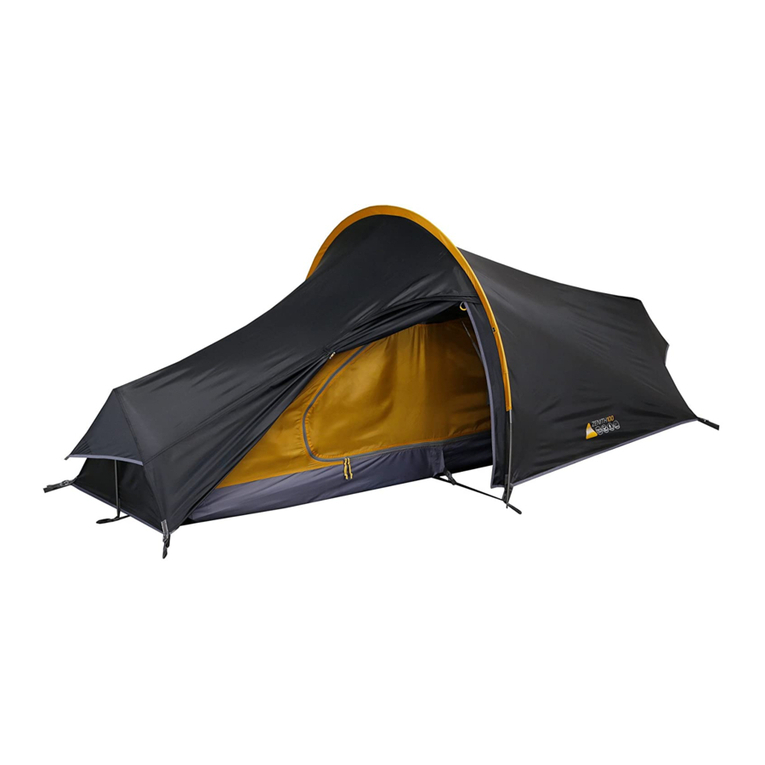
A VALVE CAP
B BOSTON VALVE
Condensation
It is important that lower vents are opened at all times to reduce the risk of condensation. During humid
or damp conditions, it is recommended that the window covers are opened to expose the mesh layer,
enabling additional airflow throughout your tent.
Do not use foam swabs or non-bonded mats directly on the tent floor. This will cause condensation
between the mat and floor and if not dried out, can lead to mildew forming.
UV Degradation
Tent fabrics can be weakened by prolonged exposure to sunlight. Under normal holiday use, your Zempire®
tent will give you many years of camping enjoyment. However, extended use in strong sunlight will cause
degradation. UV degradation is not covered under warranty. The warranty does not cover permanent sites,
displays or commercial use.
For a detailed description of all the features and specifications please visit our website.
PRESSURE
GAUGE
HOSE
4 5
PITCHING INSTRUCTIONS
1. Test Run
Practice pitching your tent at home to ensure you understand the process.
2. Pick A Site
When picking a site for your tent, try to find an area that is sheltered, flat and free from sharp objects. If
possible, position your tent with the front door facing away from the prevailing wind. Also, try not to pitch
your tent under trees as falling branches and sap can damage the tent.
3. Ground Sheet
To protect your tent from dirt and damage, it is recommended to use a ZEMPIRE®Ground Sheet. Ground
Sheets not only protect your tent floor but also make pack down faster and cleaner. The Ground Sheet
should be pegged down in the correct position first, then the tent placed on top. ZEMPIRE®Ground Sheets
are slightly smaller than the size of the tent floor to ensure water does not collect between the two layers.
4. Unpacking
When you take your tent out for the first time, take a moment to see
how it is packed or take a photo with your phone. This will help you when
it comes to packing your tent away. Separate and identify the different
parts included with your tent. Your tent fly will be pre-attached and does
not require removing when taking the tent down. The package should
include the following:
- Tent fly (pre-attached) - Repair kit
- Tent inner - 25x Dome Pegs 6mm
- 3 x Awning poles (in 10 pieces) - Guy Ropes (pre-attached)
- Pump - Additional Guy Ropes
5. Pump Setup
Your Zempire®High Pressure Pump included with your tent comes with a
pressure gauge to ensure that the air tubes are inflated to the correct level. The
pump accessories should be assembled in the configuration shown.
6. Layout
Unroll the tent with the floor facing down and locate the front entry door. Place
the tent in the correct direction for your selected site. Peg out the 4 corners of
the sewn-in ground sheet ( ), ensuring there is significant tension between each
point and that the floor sits as flat as possible. Ideally the pegs should be angled
away from your tent at 45º.
7. Airflow
Your tent will arrive with the bottom of the front door open to help increase
airflow during the first pitch. It is important however that the door remains
predominantly closed during the pitching process to ensure the tent holds
its correct shape during inflation and is not over tightened, which can cause
damage. To enable air to enter during the pitching process, all window covers
should be opened.
8. Boston Valve Attachment
The external inflation valves (x2) are located on the left side (facing the front)
of the tent, under the rain fly. Before inflating, remove the valve cap (A) and
screw the boston valve (B) into the threaded section attached to the tubes. It is
important that the valve is not cross threaded and is firmly tightened. Make sure
no fabric is stuck in the valve, as this will cause air to leak.
9. Inflation
Inflate the tube to about 4PSI, then go inside the tent and lift the frame until
it stands on its own. Continue to inflate the tube to 7-9PSI. It is important
not to over-inflate the tube. It is recommended that during very hot weather,
7PSI is used to provide room for expansion during the day. In cooler or windier
conditions, 9 PSI is recommended.
10. Setting the Floor
It may be necessary to align the base of each air tube so that the floor sits flat and taught. You may also
need to realign the corner pegging points so the floor sits flat. At this point, it helps if the front door is
completely closed when pegging out the front of the tent.
11. Pegging
Peg the remaining peg loops around the tent. Durable steel pegs are included with your tent which will be
suitable for the majority of conditions. However, when camping at a rocky or sandy location, you may wish
to purchase more specialised pegs. A range of specialised ZEMPIRE® Pegs may be available in your local
region or on our website.
12. Guy Ropes
Guy ropes are pre-attached on all ZEMPIRE®tents. It is recommended that guy ropes are used at all times.
It is important not to over-tighten the guy ropes, they should sit taught but should not distort the shape of
the tent.
13. Awning Poles
Awning poles are included with your tent. These enable the front awning to be poled-out, creating
additional shade and living space. The 10 sections of poles fit together to create 3 poles. The longer
sections create the 2 side poles (3 sections each). The 4 shorter sections create the center pole, which
will be longer than the side poles once complete. Open both doors of the awning fly and insert the poles
through the eyelets on the lower edge. Attach guy ropes and peg out to secure.
14. Deflation and Pack Away
- Close the mesh door, leaving the cover open to allow air to escape from the tent.
- Unpeg all guy ropes and roll up to ensure they do not get tangled during packing.
- Unpeg the peg points, excluding the four corners.
- Clean and dry pegs before storing in the bag.
- Unscrew each of the boston valves on the left side of the tent (this may be quite loud). Wait for all the air
to be expelled.
- Unpeg the four corners of the tent.
- Lay the carry bag at the valve end of the tent.
- Lay out the tent so that you create a clean rectangular shape.
- Fold the tent in half from front to rear and then in half again.
- Place the pump, peg bag and awning poles on top of the folded tent at the opposite side of the valves.
Roll the tent towards the boston valves to help expel any remaining air from the tubes. It may take more
than one roll to expel all the air from the tent.
- Use the webbing compression straps to secure the rolled tent and stand on its end.
- Pull the carry bag over the rolled tent. Flip the tent over, tension the compression straps on the side and
pull the drawstring shut.
FRONT
